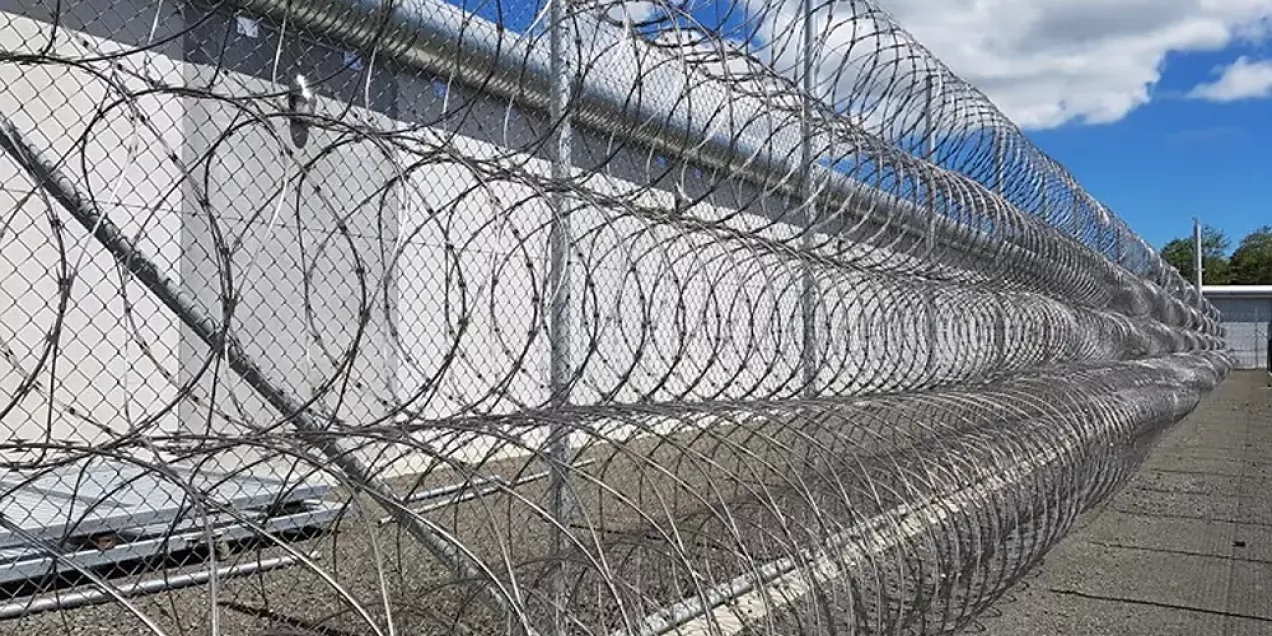
All types of Egoza razor wire are designed to deter, repel, and physically secure a perimeter. However, when it comes to selecting a specific model, the question often arises: which type of Egoza is the most dangerous and which barrier design can inflict the most damage on an intruder attempting to get through? The answer depends not only on the wire’s construction but also on how it's installed, the configuration of the barrier, and its intended use.
The danger level of Egoza is determined by a combination of stiffness, elasticity, number of blades, coil density, and complexity of installation. The highest risk is presented by designs that disorient intruders, create multiple contact points with sharp surfaces, and make safe passage virtually impossible even with tools.
What Makes Egoza Dangerous
The primary injuring component of the wire is the blade – a stamped element with sharp edges mounted on a reinforced steel core. The positioning and frequency of the blades determine how quickly and severely a person is cut upon contact. Unlike ordinary barbed wire, Egoza blades can pierce clothing, skin, and even gloves, especially under pressure or during slippage.
Another factor is elasticity. The wire is not static – it’s stretched and actively resists deformation. Attempts to pull it apart cause the blades to shift, snag, and slide, increasing the area of contact. This leads to a series of cuts rather than a single injury, especially as the person moves or tries to break free.
The Most Injurious Barrier Designs
In terms of potential harm, three barrier types are the most dangerous:
- Egoza pyramid barrier – the most aggressive design. It consists of multiple concertina coils joined into a volumetric structure with blades oriented in various directions. An intruder can’t safely grip, climb, or lie on top. Any movement results in contact with at least two surfaces at once.
- Large-diameter concertina wire (950-1250 mm) with tight clips – creates a spring-loaded, wide trap. Even if one clip breaks, the wire maintains its shape. Attempts to climb inside or over it lead to multiple cuts and a high chance of getting stuck.
- Egoza razor mesh – forms an almost solid wall of blades, impossible to grip or cross without tools. It is especially dangerous when attempting to cut it: the mesh is elastic, the wire is under tension, and a single press on the mesh can result in an instant cut.
Each of these solutions poses a serious threat to intruders and is intended for facilities where security is critical: military bases, warehouses, protected perimeters, and dual-control zones. These barriers don’t just warn – they actively stop.
Relatively Safe Modifications
Not all types of Egoza are equally injurious. For private properties, country homes, and temporary construction site fencing, milder versions are often used. They maintain a deterrent appearance but are less aggressive in effect. For example, the flat Egoza barrier looks intimidating but minimizes accidental contact – it’s mounted strictly on top of the fence and doesn’t extend outward. The same applies to mobile barriers, often used in crowds where the goal is to deter, not injure.
There are also models with reduced diameter, fewer blades, and lighter construction. These are suitable for areas with limits on force, such as private residences or zones where inner-side contact is possible (e.g., pets, children).
Legal Restrictions and Responsibility
Installing particularly dangerous types of Egoza requires adherence to safety regulations. On public access sites or residential properties, the wire must not extend beyond property lines, must not be reachable by pedestrians, and must be clearly marked with warning signs. This is especially important near public areas, parking lots, or roads.
On restricted or industrial sites, more aggressive designs may be used, including electrified barriers and additional detention modules. Even then, technical standards apply – Egoza must be installed to avoid harming staff and maintain a controlled risk zone.
How to Choose the Right Threat Level
If the goal is simply visual deterrence, a compact model with a single row of clips may suffice. For physical stoppage and impenetrability, larger diameters, dense clips, and more blades are optimal. If the site is at risk of tool-assisted intrusion, the best choice is a pyramid barrier or double concertina wire anchored to robust supports.
Choosing the proper threat level also requires considering legal consequences. It’s important to remember that Egoza is a security barrier, not a weapon – its purpose is deterrence, not harm. When installed responsibly and within regulations, it performs this role effectively and safely for the property owner.